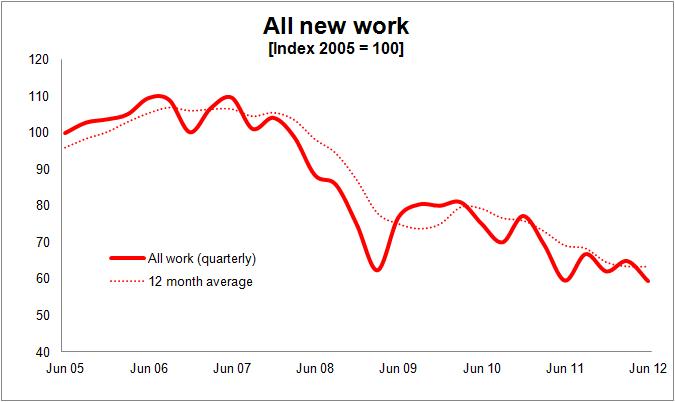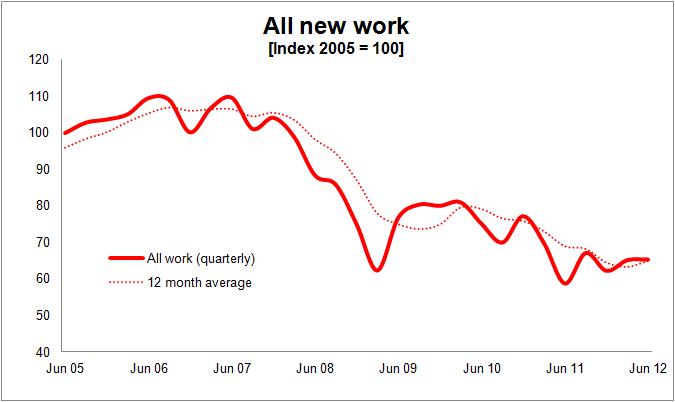ONS correction to new orders data adds more black eyeliner to a Gothic horror show
It would be easy to attack the Office for National Statistics for miscalculating the new orders figures by £1.2 billion for the second quarter of this year.
Yes it’s embarrassing for the organisation. The folk there don’t need me or anyone else to tell them that. By all accounts there was a glitch in the system which chucked out a rare error.

There’s no getting around the fact that it was a mistake. But when it came to light it was checked and the organisation came clean.
In the grand scheme of things little harm has been done. No people or animals died and I suspect that the error didn’t radically alter the business plans of any but the most optimistic of firms.

That is a rather more admirable than the record our esteemed banks hold for coming clean after losing real money in far larger quantities.
So let’s get it all in perspective.
As to the effect of this “loss” of £1.2 billion of construction work on the order books of UK contractors, it doesn’t really alter the picture.
The after and before charts show that in the broad sweep things remain pretty grim with or without the £1.2 billion.
Perhaps the only victims are any commentators who might now be red faced were they to have been silly enough to suggest that the bounce in new orders data originally posted was some sign of improvement in the underlying state of UK construction.
As I said when the original release was issued: “Some will note the quarter-on-quarter rise of 0.2% and the 11.1% rise in the second quarter compared with the same time last year and foolishly suggest this represents improvement.”
Yes I can be smug given that the correction reinforces my view. But that would be equally as foolish and miss the main point.
The new orders figures metaphorically speaking represent the fuel stops made by contractors. They tell us how much is being put in the tank. They are not telling us how big the tanks are and how full they are. Data on that is thin on the ground.
We can make crude assessments of how much of the new orders on the books have been completed, but that’s far from straightforward.
What we can say about the new orders data is that it has been running very low for a very long time. The correction does little to alter that picture, though it does reinforce the concerns. The data now suggest that contractors are currently winning work at a slower rate than at any time since the industry dipped into its depression.
For me, while the level of new orders is disturbing, a more worrying aspect is that the response of the private sector appears to be so weak.
The correction cut a further £543 million from the amount of work won in the private commercial sector in the second quarter. That rather heightens the concerns. Meanwhile, the private housing sector, where orders were also corrected downward, seems to be treading water rather than providing the boost many had expected.
It all points to one depressing conclusion. At the current rate of winning work the level of construction output must eventually fall, unless there is a surge in repair and maintenance work, or other work that is not captured by the new orders survey.
To reiterate the point I made in the original blog on these figures, the Government needs to act with urgency and sufficient magnitude if it wants construction to contribute to growth rather than drag the economy deeper into recession.